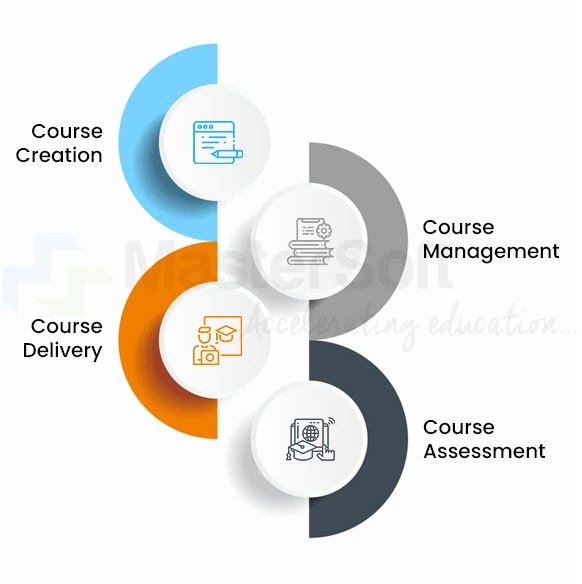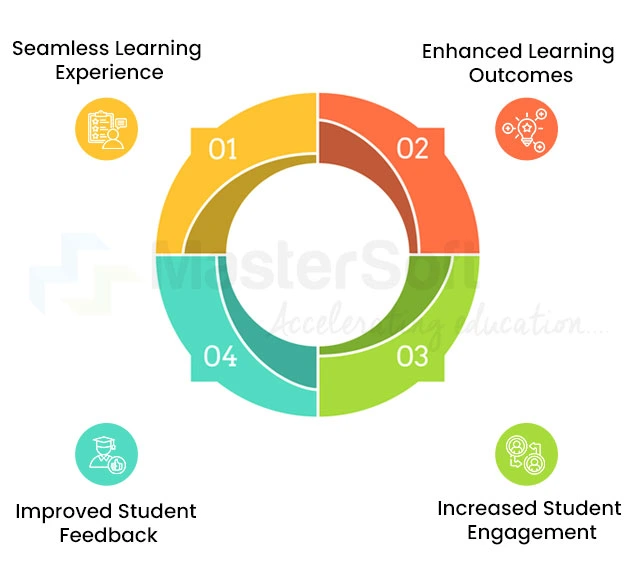02 Jan 2024
The speed at which technology is currently evolving is truly astounding. From self-driving cars to AI-integrated daily life assistants, technology is seeing rapid growth. One such innovation is Virtual Reality. Virtual reality is not a new concept, but it has gained tremendous attention and popularity in the past few years.
Virtual reality is the use of computer-generated simulations to create immersive and interactive experiences that mimic real or imagined scenarios. Virtual reality can be used for various purposes, such as entertainment, training, therapy, and education.
Another part of society that is experiencing technological advancement is education. Education is the most important and influential part of human life. It shapes our knowledge, skills, values, and attitudes. However, traditional education methods are often limited because of time, space, resources, and accessibility.
Here’s where virtual reality comes into play. Virtual reality offers an innovative way of learning that surpasses the boundaries of conventional education. It provides students with engaging, personalised, and quality learning experiences that enhance their motivation, retention, and performance.
Today, we will be exploring how virtual reality is transforming education through two key concepts:
- Learning Management System (LMS)
- Virtual Learning Environment (VLE).
So without any further delay, let's start right away.
Learning Management System (LMS)
A learning management system is a software application that streamlines administration, documentation, and tracking along with learning and development programmes. With LMS, educational institutes can easily create and manage online courses as well as blended learning programmes.
Features to Help you Understand LMS in a Better Way

- Course Creation : A Learning Management System allows teachers to create online courses using various tools and formats. It also allows teachers to organise the course content into modules or units. These can be sequenced or customised according to the learning objectives and outcomes.
- Course Management : With LMS teachers can also manage the course enrollment, access, progress, completion, and evaluation of students. Learning Management also allows teachers to communicate with students through messages, announcements, forums, chats, etc.
- Course Delivery : Learning management software also gives students access to the course content anytime and anywhere through various devices. Students can easily interact with the course content in different ways, such as self-paced or real-time.
- Course Assessment : An LMS also allows teachers to assess the learning outcomes of students through various methods, such as quizzes, tests, assignments, projects, etc.
Now that we understand the learning management system, let’s have a look at the virtual learning environment
Adapting to Online Learning: Challenges and Solutions
Read More
Virtual Learning Environment (VLE)
A virtual learning environment (VLE) is an online platform that provides students access to various digital resources. Educational institutions can create and participate in virtual learning experiences that simulate real or imagined scenarios using virtual learning environments.
Here are some features of VLE for you:
- Resource library : A VLE lets teachers upload or link various digital resources that are related to the learning topic or objective. It also allows students to access these resources at their own pace and convenience.
- Activity creation : With VLE, teachers can create various online activities that engage students in active and collaborative learning. VLE also allows students to participate in these activities individually or in groups.
- Scenario creation : A VLE lets teachers create immersive and interactive scenarios. These scenarios mimic real or imagined situations that are relevant to the learning topic or objective. VLE also allows students to experience these scenarios using various devices, such as computers, tablets, smartphones, headsets, controllers, etc.
- Feedback provision : Lastly, VLE also allows teachers to provide feedback and guidance to students throughout their learning journey. In retrospect, VLE also allows students to provide feedback and reflections to themselves and others using various tools.
There we go. Now we understand what a learning management system and virtual learning environment is. But what if we intersect these two?
The Intersection of LMS and VLE
An Learning Management System and a Virtual Learning Environment are not mutually exclusive systems. They can be intersected to work together and complement each other. This creates a comprehensive and integrated learning environment that supports the entire learning cycle.
By integrating an LMS and a VLE, teachers can take advantage of the strengths of both systems. This will help them provide students with the best of both worlds.
Benefits of integrating an LMS and a VLE:

- Seamless learning experience : By integrating an LMS and a VLE, students can easily access the learning resources, activities, and scenarios in one place. This can reduce confusion, frustration, and distraction and improve the learning flow and continuity.
- Enhanced learning outcomes : Students can benefit from a variety of learning methods and modes that suit their needs and preferences. They can also apply their knowledge and skills in realistic and meaningful contexts that enhance their understanding and retention. This leads to improved learning outcomes and performance.
- Increased student engagement : With the integration of an LMS and a VLE, students can enjoy more engaging, interactive, and immersive learning experiences. They can also collaborate with other students and teachers in various ways that nurture social and emotional learning. This helps increase student engagement and satisfaction.
- Improved student feedback : Lastly, by integrating an LMS and VLE, students can receive regular and constructive feedback from teachers throughout their learning journey. They can also monitor their progress and achievements using various tools and indicators. This helps improve student feedback and reflection.
Benefits of Virtual Learning Environments
When it comes to virtual learning environments, students and teachers can enjoy many benefits, like accessibility, affordability, opportunity, and flexibility.
Here are a few:
- Accessibility : Virtual learning environments make education accessible to students facing problems due to location, physical disability, financial conditions, or other factors. Virtual learning environments have given students access to quality education from any place with an internet connection and a compatible device. Virtual learning environments also give students access to education at any time that suits their schedule and availability.
- Affordability : Virtual learning environments make education affordable to students who may face challenges related to tuition fees, travel costs, accommodation, etc. Virtual learning environments reduce or eliminate these costs by letting students study online without having to relocate or commute. It also allows students to save money on textbooks and other materials by providing them with digital resources and activities.
- Opportunity : VLE makes education more opportunistic for students who may seek new ways of learning, suiting their interests, goals, and aspirations. Virtual learning environments give students access to a wide range of courses and programs from different institutions across the world. It also allows students to explore different topics and domains that may not be available in traditional settings.
- Flexibility : Virtual learning environments make education more flexible for students with different or changing needs, preferences, and circumstances. Virtual learning environments allow students to customise their learning experience according to their own pace, style, and level. With virtual learning environments, students find it easy to adjust their learning plan according to their situation.
Challenges of Virtual Learning Environments
While providing great benefits, the virtual learning environment has its challenges as well. These challenges are posed to both teachers and students in terms of quality, support, engagement, and assessment.
Here are some challenges for your understanding:
- Quality : If they are not designed and delivered properly, virtual learning environments may compromise the quality of education. VLE may face technical issues, such as poor connectivity, low bandwidth, or malfunctioning devices. It may also lack pedagogical severity, such as clear objectives, coherent structure, or relevant content.
- Support : Students who face problems in their learning process may have to deal with inadequate support in the virtual learning environment. Virtual learning environments may limit or delay communication between students and teachers or among peers. It may also have insufficient guidance or feedback for students to monitor or improve their learning outcomes.
- Engagement : VLE may reduce the engagement of students who feel disconnected from their learning community. Virtual learning environments may also result in low or no social interaction between students and teachers or among peers. It also offers low or no emotional connection between students and teachers or among peers. Virtual learning environments may also have low or no sense of relevancy in the virtual scenarios.
- Assessment : Virtual learning environments may pose difficulties in assessing the learning outcomes of students who may have diverse learning needs, preferences, and goals. VLE may have limited or unreliable methods for measuring the knowledge, skills, attitudes, and behaviours of students. It may also have limited or inconsistent standards or criteria for evaluating the performance and progress of students.
Conclusion,
Virtual reality is transforming the education sector by offering an innovative way of learning. Using Learning Management Systems and Virtual Learning Environments, educational institutions can create engaging, personalised, and quality learning experiences for students.
By intersecting these two, teachers can provide students with a comprehensive learning environment that supports the entire learning cycle.
This enhances their motivation, retention, and performance and also helps them to become successful in their future endeavours. As technology continues to evolve, educational institutions must embrace these innovations to create a better future of learning.

Poonam Nathani,
Academic Consultant